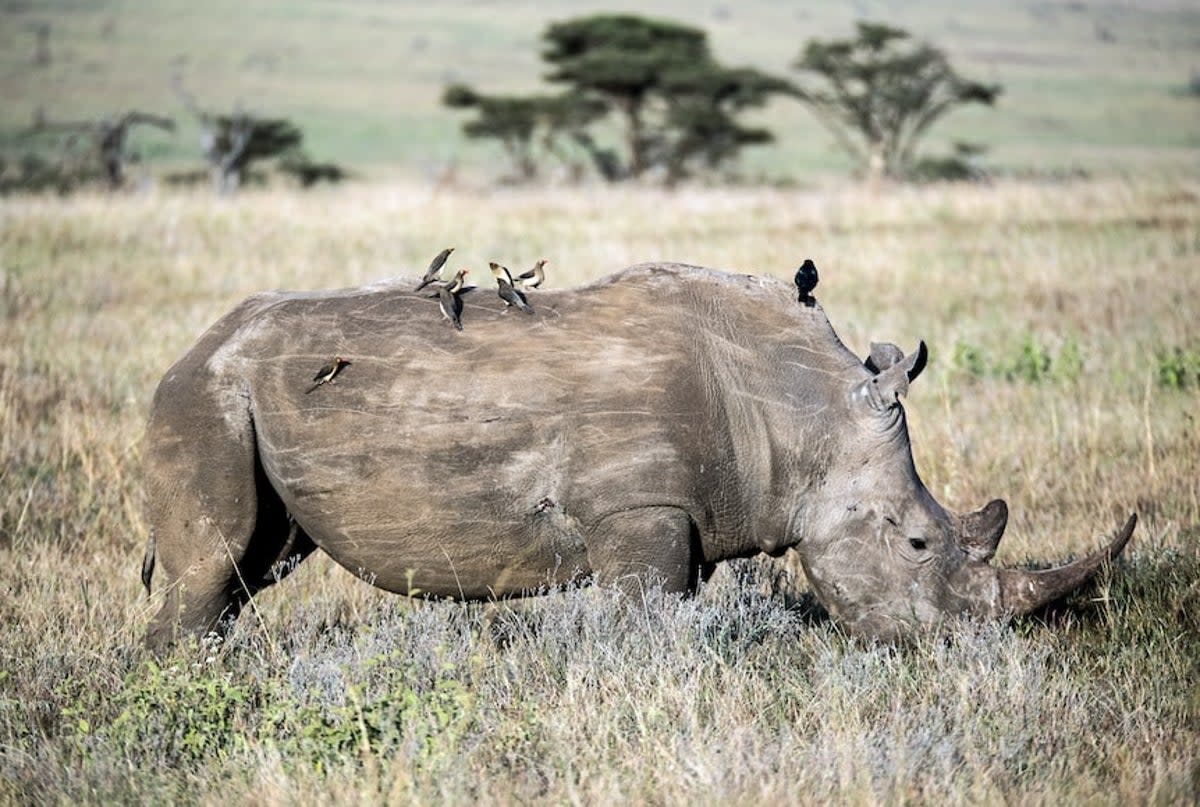Zimbabwe rhino population up while rest of Africa sees decline

By Farayi Machamire for Zim Morning Post
Zimbabwe’s rhino population remains among the bright sparks on the African continent after it increased by 14 percent from a total 887 in 2017 to now stand at 1,033.
The statistics were compiled by Rhino Specialist Groups of the International Union for Conservation of Nature (IUCN) and trade monitoring organisation TRAFFIC, ahead of the 19th meeting of the Conference of the Parties (CoP19) to the Convention on International Trade in Endangered Species of Wildlife Fauna and Flora (CITES) in Panama this month.
The report detailed that Zimbabwe’s rhino population has increased since 2017, from 367 to 417 white rhinos, and from 520 to 616 black rhinos at the end of 2021.
The southern African nation is in the process of dehorning its entire rhino population.
“Poaching levels peaked in 2019 when 82 carcasses were discovered, followed by 12 in 2020 and four in 2021,” reads the report.
Zimbabwe, together with three other range States, conserve the largest proportion of African rhinoceroses and largely determine the continental trends.
Turning to black rhinoceroses, in 2021, Namibia contributed 34.8% (2,156 out of 6,195), South Africa 33.2% (2,056), Kenya 15.1% (938) and Zimbabwe 9.9% (616) of the continental population.
For white rhinoceroses, South Africa contributed 81.3% (12,968 out of 15,942), Namibia 7.7% (1,234), Kenya 5.5% (873) and Zimbabwe 2.6% (417) of the continental population.
“As the range State with the highest number of white rhinoceroses, it is worth noting that the white rhinoceros’ population in South Africa declined from 15,625 at the end of 2017, to 12 968 at the end of 2021,” reads the report.
“Also worth noting is that rhinoceros’ populations of Botswana show a substantial decline, with 452 white and 50 black rhinoceroses respectively at the end of 2017, that declined to 242 white and 23 black rhinoceroses at the end of 2021.”
According to the report, at the end of 2021, Africa conserved an estimated 22,137 rhinoceroses, which comprised 6,195 black and 15,942 white rhinoceroses.
Further, 218 black and 1,077 white rhinoceroses are in ex-situ collections, resulting in 23,432 African rhinoceroses worldwide at the end of 2021.
The estimated overall number of rhinoceroses in Africa is lower than that reported at CoP18 (23,562 by the end of 2017).
In this regard, the estimated number of black rhino numbers (6,195 at the end of 2021) was 12.2% higher than the estimate of 5,495 individuals at the end of 2017.
In contrast, the estimated number of white rhinoceroses (15,942 at the end of 2021) was 11.8 % lower than the estimated 18,067 individuals at the end of 2017.
The report concludes that African rhinoceros continental numbers declined by 1.6% per annum from 2017 to 2021, and that black rhinoceros increased at 3.0% per annum, while white rhinoceros decreased at 3.1% per annum.
In the period 2018 to 2021, 2,707 rhinoceros poaching incidents were recorded in Africa, of which 90% took place in South Africa.
During 2020, when governments globally implemented measures in response to the COVID-19 pandemic, three range States recorded lower poaching rates.
Botswana was noted with concern due to the significant decline in the rhino population and unconfirmed reports of high levels of poaching in 2021.
Despite the continued loss of white rhinos in recent years, their populations are still cause for celebration after they were nearly completely wiped out from big game hunting in the nineteenth century.
Thought extinct, a population of fewer than 100 southern white rhinos was found in what today is Kwazulu-Natal in South Africa.
Today’s populations are all descended from those few dozen individuals. However, a separate subspecies, the northern white rhino, is now considered effectively extinct with only two individuals, both females, remaining, in Kenya
This article is reproduced here as part of the African Conservation Journalism Programme, funded in Angola, Botswana, Mozambique, and Zimbabwe by USAID’s VukaNow: Activity. Implemented by the international conservation organization Space for Giants, it aims to expand the reach of conservation and environmental journalism in Africa, and bring more African voices into the international conservation debate. Written articles from the Mozambican and Angolan cohorts are translated from Portuguese. Broadcast stories remain in the original language.
Read the original story here:

 Yahoo News
Yahoo News 
